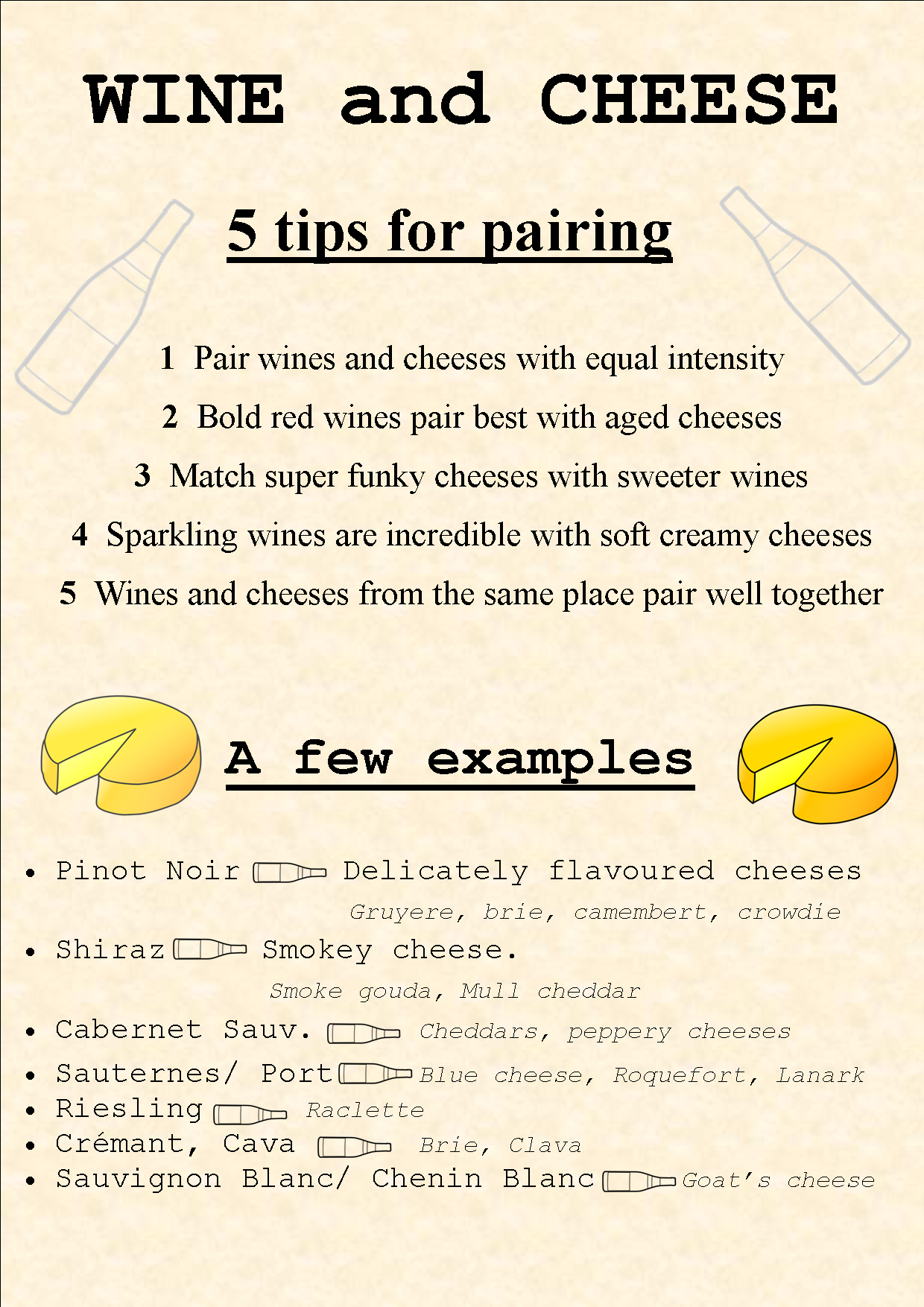Food & Wine Matching
FOOD AND WINE MATCHING – WHERE TO START
- Cooking is a balance of sweet, salty, acid, umami and fat. The trick is to maintain that balance and not choose a wine that will ruin the food (or vice versa). The idea is to increase the perception of pleasure of a dish and the wine by enhancing the attributes of both.
- As a general rule don’t waste your best wine on ‘basics’ beans on toast or buy a fantastic bit of beef from the farmers market, spend hours preparing it and then serve it with a bottle of £4.99 wine from the local newsagent – it will be a total waste of time, money, good food and/or wine. If, however, you have a truly amazing bottle of wine you want to show off (especially an older vintage as they tend to be more subtle, their flavours less flamboyant), don’t serve it with a wildly complex dish. A simple dish of quality ingredients will allow the wine to be the centre of attention.
- As the saying goes ‘what grows together goes together’ – whenever you can try to match a cuisine with a wine from the same region. Generations of trial and error means that these are tried and tested combinations that have been perfected over time and will rarely let you down.
- Acidity is key. If you have a dish which is high in acidity any wine with less acidity than the food it will appear flabby and tasteless.
- Contrasts can work really well in food and wine matching, just as some food clashes are a brilliant combination. Salty blue cheese and a sweet, fruity port being such an example. Be careful on this though – have fun trying but some things just do not work!
- Bitterness in wine is caused by the tannins which can sometimes be overbearing and astringent. Eating fatty foods with these wines will soften the tannins as the fats and the tannins bind together making them appear more velvety and supple.
- Wine with a high alcohol and/or tannins is good to pair with fatty foods as the fat mellows out the tannins and/or acidity allowing you taste other flavours in the wine
- Chilli is a tricky one when it comes to wine and food matching. High alcohol and tannins both make the chilli heat effect much stronger so it really depends on whether this is something you like or not. If not and you like a red with your curry you are better off picking a wine with lower tannins and alcohol. Carmenere would be a good option, particularly with lamb or beef as it’s tannins aren’t too big but it still has bags of flavour to stand up to all the spices in the dish.
- One of the most important factors in matching your food and wines is the weight. A huge tannic red will pretty much destroy any flavour in a light summer salad and similarly, delicate floral, nutty notes in a light Italian white will be completely wiped out by a heavy venison stew.
- Certain flavour or structure combinations will always create an unpleasant clash (we’ve all drunk orange juice too soon after brushing our teeth) and although you can get away with many weird and wonderful combinations there are few things you should definitely try to avoid and tannic wines and fish are the main culprit. It is fine to have red wine with fish if that’s what you like to drink but always go for something low in tannins as the iodine content of the fish (which is particularly high in shellfish) reacts with the tannins. This creates a very unpleasant metallic flavour in both the wine and the fish essentially ruining both. Other foods contain cyanins (founding asparagus amongst other things) or mercaptins (artichokes) which can enhance sweetness by making wine taste unpleasantly syrupy or enhance the bitterness in a wine.
- Have fun trying new combinations and don’t forget who you are serving. Some people like what they like and no matter how perfect a match your dish is they will only ever want a glass or claret/pinot grigio with it and that is also absolutely fine.
- Hereafter is an example of wine and cheese pairing, with examples of a few scottish cheeses.

We are more than happy to offer advice either over the phone or via email
